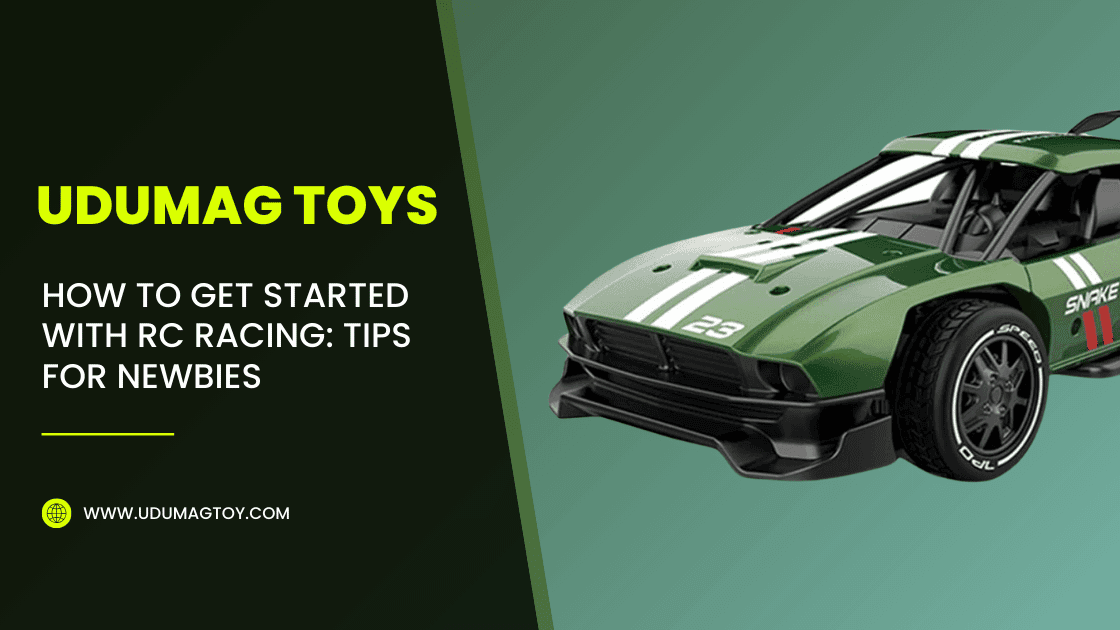The world of remote control (RC) racing is an exciting place where speed, skill, and community come together. For many, racing miniature cars can offer the adrenaline rush of motorsports without the hefty price tag. This thrilling hobby has grown tremendously in recent years, with statistics showing a 15% increase in participation according to the 2022 International RC Racing Association report. If you’re ready to join this fast-paced world, this guide will help you navigate the winding roads of RC racing.
Choosing Your First RC Car: Types and Considerations
Understanding Different RC Car Types: On-road vs. Off-road
When selecting your first RC car, it’s essential to know the difference between on-road and off-road vehicles:
- On-road cars: These are designed for speed and precision, performing best on smooth surfaces like asphalt. Their sleek design aids in aerodynamics.
- Off-road cars: Built to tackle rough terrain, off-road cars feature larger tires and robust suspensions, making them perfect for dirt tracks or rugged environments.
Key Features to Look For: Motor, Battery, and Radio System
Before making a purchase, pay attention to these crucial components:
- Motor: Choose between brushed and brushless motors. Brushless motors typically offer more speed and efficiency.
- Battery: Look for LiPo (Lithium Polymer) batteries due to their lightweight nature and higher power output.
- Radio system: A reliable radio transmitter and receiver ensure better control and responsiveness.
Budgeting for Your First RC Car: Price Ranges and Value
Setting a budget can help narrow down your options. Here’s a quick price breakdown:
- Entry-level cars: $100 to $200
- Mid-range options: $200 to $500
- High-performance models: $500 and up
Consider investing in a quality model that suits your needs and interests.
Essential Gear and Equipment for RC Racing
Radio Transmitter and Receiver: Choosing the Right Setup
A good radio transmitter is essential for seamless operation. Look for features like:
- Frequency: Common frequencies are 2.4GHz, providing better range and less interference.
- Channels: A 2- to 6-channel transmitter is sufficient for most beginners.
Batteries and Chargers: Powering Your RC Car
Choose a charger designed for your battery type. A smart charger is a wise choice, as it can automatically adjust settings, prolonging battery life.
Maintenance Tools: Keeping Your Car in Top Condition
Keep your RC car running smoothly with basic tools such as:
- Screwdrivers
- Wrenches
- Lubricants
- Cleaning brushes
Mastering the Basics of RC Car Control
Learning to Drive: Practice Makes Perfect
Start driving in open areas free from obstacles. Gradually increase your speed as you become comfortable with the controls.
Understanding Steering and Throttle Control
- Throttle control: Focus on smooth acceleration and braking to maintain control.
- Steering: Practice turning and adjusting your trajectory to navigate corners expertly.
Advanced Techniques: Jumps, Turns, and Drifting
As you gain confidence, try some advanced techniques:
- Jumps: Approach ramps with the right speed. Too fast or slow can lead to crashes.
- Turns: Master the art of drifting to navigate sharper corners effectively.
Finding and Participating in RC Races
Locating Local RC Tracks and Clubs
Check online for local RC tracks or clubs. Join communities on social media or forums to connect with fellow racers.
Race Regulations and Etiquette
Familiarize yourself with race regulations and etiquette to compete respectfully. Key points include:
- Respecting fellow racers
- Following track rules
- Maintaining your car in good condition
Tips for Competing in Your First Race
Prepare for your first race by:
- Practicing regularly.
- Arriving early to familiarize yourself with the track.
- Staying calm and focused during the competition.
Maintaining and Upgrading Your RC Car
Regular Maintenance Schedule: Cleaning, Lubrication, and Inspection
Create a routine for regular maintenance. Check your car’s:
- Tires: For wear and tear.
- Motor: For debris or damage.
- Battery: For safe connections.
Common RC Car Repairs and Troubleshooting
Repair petty issues like:
- Loose screws: Tighten for better performance.
- Worn tires: Replace to enhance grip.
- Battery problems: Consult the manual for diagnostics.
Upgrading Your RC Car: Performance Enhancements
Once you’re comfortable, consider upgrading components for improved speed and control, such as:
- Higher-torque servos: For better steering response.
- Better tires: For enhanced grip and handling.
Conclusion: Hitting the Track and Beyond
Getting started in RC racing is an exhilarating journey filled with learning and excitement. To recap:
- Choose the right car and gear to fit your needs.
- Practice driving techniques to master control.
- Engage with the local community to enhance your experience.
As you progress, explore online resources for tutorials and join communities for support and knowledge. RC racing promises ongoing excitement and camaraderie. Now, grab your car and hit the track!





 No products in the cart.
No products in the cart.